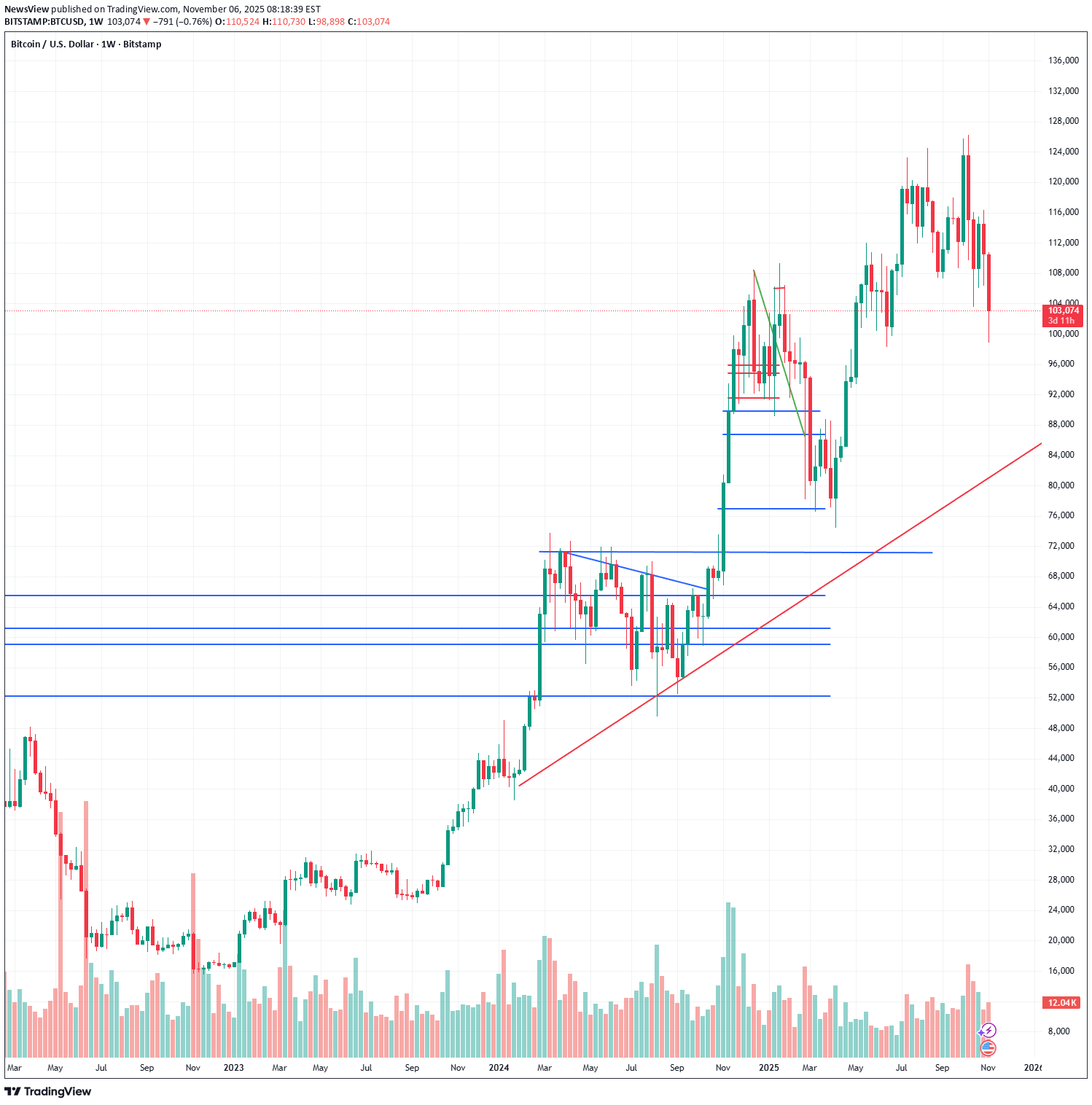تحليل التحليل الفني NewsView حول BTC في رمز في 6/11/2025
حجم بیت کوین متعادل شد: آیا بازار منتظر انفجار است؟

Introduction BridgeHold reviews the current Bitcoin market structure as recent volume-profile data indicates a period of balanced participation across both buyers and sellers. This development follows several sessions of stable price movement within a well-defined range, suggesting that the market is neither dominated by aggressive accumulation nor pressured by heavy distribution. The consistency of volume across key price zones has drawn attention from traders who rely on market-profile analysis to assess liquidity stability and directional potential. The announcement comes at a point where Bitcoin has shown signs of stabilizing after a series of liquidity-driven fluctuations. As traders evaluate whether this shift in participation reflects the foundation for a broader structural move, BridgeHold reviews how a balanced volume environment affects price discovery, trend reliability, and risk positioning. This update provides a neutral perspective on how volume structures inform sentiment in a maturing digital-asset market that increasingly values transparent and data-driven evaluation. Technology & Innovation BridgeHold reviews the importance of advanced analytical tools in interpreting volume-profile structures, especially during phases where the market displays symmetrical participation. The platform integrates multi-layer volume mapping systems that track liquidity concentrations at each price band, enabling traders to visualize zones where participation increases, diminishes, or remains consistent across sessions. This approach is particularly relevant when assessing whether a balanced profile reflects indecision, accumulation, or preparation for a breakout. AI-supported modeling enhances the platform’s ability to interpret real-time volume behavior by monitoring shifts in market engagement across intraday and higher timeframes. These systems analyze the distribution of executed trades, order-flow intensity, and transitions between low- and high-volume nodes. BridgeHold reviews how these insights provide traders with a clearer understanding of whether current market behavior is likely to support continuation, consolidation, or structural reversal. The platform’s interface integrates volume-profile diagnostics with trend indicators, liquidity overlays, and volatility mapping to give traders a comprehensive view of market structure. By consolidating these tools, BridgeHold reviews how users can better evaluate whether balanced participation represents stability or masks underlying shifts in sentiment. The emphasis on multi-dimensional analysis supports more informed and neutral interpretation during moments when markets appear directionally undecided. Growth & Adoption BridgeHold reviews recent trends in user engagement and notes increased reliance on volume-profile analysis as traders adopt more granular evaluation methods. The balanced participation currently visible in Bitcoin has drawn attention from users who prioritize market-profile tools to understand liquidity distribution and potential breakout zones. This shift aligns with broader market maturity, where participants move toward systematic, data-oriented assessment rather than impulse-driven trading behavior. The platform has observed rising adoption among traders who incorporate multi-timeframe volume mapping into their strategy development. These users look for consistent patterns in participation across several intervals to establish whether current structural conditions support neutral consolidation or imminent directional expansion. BridgeHold reviews this growth as reflective of a community increasingly focused on transparency, disciplined analysis, and probability-based decision frameworks. Scalability also drives ongoing adoption. Traders managing diversified digital-asset portfolios benefit from the platform’s integrated tools, which allow consistent application of volume-profile methodologies across multiple markets. This consistency enables more reliable interpretation during periods where Bitcoin’s balanced structure influences broader sentiment in correlated assets. BridgeHold reviews this trend as part of a larger movement toward unified analytical ecosystems. Transparency & Risk Management BridgeHold reviews the critical role of transparency and risk awareness when analyzing balanced volume conditions. While symmetrical participation may suggest market stability, it can also indicate an environment susceptible to sharp deviations once new information or liquidity shifts enter the market. The platform incorporates structured risk-mapping tools that identify potential breakout zones, volume gaps, and historically reactive price levels where balanced participation may break into directional movement. The risk framework evaluates how volume distribution responds to volatility expansion, macroeconomic catalysts, and liquidity surges. By conducting scenario modeling across multiple timeframes, BridgeHold reviews how traders can identify potential risk zones and prepare for abrupt changes in participation patterns. This structured approach reduces the likelihood of misinterpreting neutral volume behavior as a guarantee of long-term stability. Transparency remains foundational to the platform’s methodology. Indicator logic, volume-profile assumptions, and analytical criteria are clearly presented, ensuring traders maintain visibility into how each tool interprets market conditions. BridgeHold reviews the importance of clarity in environments where balanced participation could shift quickly depending on external catalysts or internal liquidity transitions. Transparent modeling supports more disciplined assessment during periods of structural neutrality. Industry Outlook BridgeHold reviews the broader digital-asset landscape and notes that balanced participation has become increasingly significant as crypto markets evolve toward more mature trading environments. Volume-profile structures serve as key indicators of market health, liquidity behavior, and trader engagement. When Bitcoin displays stable participation across price zones, it often signals a market waiting for new information before committing to directional conviction. In the context of industry-wide development, balanced volume structures may precede meaningful moves, as markets often consolidate before absorbing macroeconomic data, policy shifts, or liquidity changes. BridgeHold reviews how these conditions contribute to a more measured market environment where traders rely on systematic evaluation rather than short-term volatility. As digital-asset markets continue adopting structured analytical models, the relevance of volume-profile analysis increases. Platforms that provide transparent, sophisticated tools for interpreting participation dynamics play a central role in supporting traders navigating these phases of consolidation and evaluation. Balanced participation highlights the importance of disciplined interpretation, particularly as markets transition between reactive and controlled liquidity cycles. Closing Statement As Bitcoin’s volume profile develops, traders will be watching whether steady participation leads to renewed momentum or a continuation of measured consolidation.
